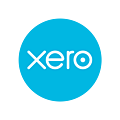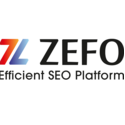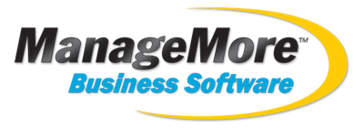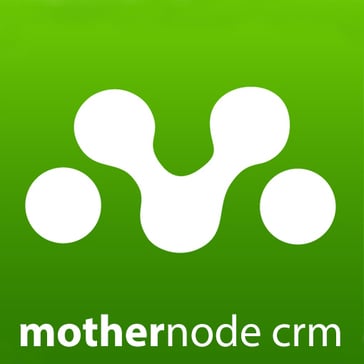4.7
AuditRunner Review
Explore our AuditRunner review: analyze features, security, pricing, updates, and support. See if its value for money fits your internal audit needs!
Introduction to AuditRunner
Welcome to our AuditRunner review. Understanding AuditRunner involves seeing it as a powerful Governance, Risk, and Compliance (GRC) solution aimed at simplifying complex audit and compliance management. This platform helps organizations centralize their GRC activities, automate workflows, and gain better visibility into risk landscapes, ultimately driving efficiency and reducing operational friction associated with maintaining compliance standards.
Getting started with AuditRunner reveals a system designed for clarity. This overview touches on the AuditRunner basics, providing a foundation before we delve into specifics. Exploring the Benefits of AuditRunner shows how it assists businesses in managing internal audits, risk assessments, and regulatory requirements more effectively, offering a structured approach to complex GRC challenges.
Comprehensive overview and target audience
AuditRunner presents itself as a comprehensive solution meticulously designed for streamlining governance, risk management, and compliance GRC processes. It serves organizations by centralizing audit management, risk assessment workflows, compliance tracking, and internal control monitoring within a single, integrated platform. The core aim is to enhance visibility, improve efficiency, and ensure consistency in how businesses manage their GRC obligations, moving away from fragmented or manual systems. AuditRunner facilitates adherence to industry standards and regulations, ultimately helping organizations mitigate risks proactively.
The target audience for AuditRunner is diverse yet specific, primarily focusing on organizations requiring robust internal control frameworks and facing significant regulatory scrutiny. This includes medium sized businesses to large multinational corporations across various sectors like finance, healthcare, manufacturing, and technology. Key users within these organizations typically include:
- Internal audit departments seeking automation for planning, fieldwork, reporting, and issue tracking.
- Risk management teams needing tools for identifying, assessing, monitoring, and mitigating risks across the enterprise.
- Compliance officers responsible for managing regulatory requirements, policy adherence, and compliance reporting.
- IT security professionals managing IT audits, vulnerability assessments, and compliance with standards like ISO 27001 or SOC 2.
- Senior management and board members requiring clear oversight of the organization’s risk and compliance landscape.
Understanding the **AuditRunner value for money** requires looking at its extensive feature set designed to address these specific needs. The platform is known for its regular **AuditRunner updates and new features**, ensuring users benefit from the latest GRC best practices and technological improvements. Crucial for handling sensitive data, robust **AuditRunner security features**, including data encryption and role based access controls, are integral to the system’s architecture. Potential customers often perform an **AuditRunner pricing comparison** with similar GRC tools; AuditRunner typically positions itself competitively by offering a comprehensive suite that reduces the need for multiple point solutions. The availability of thorough **AuditRunner support and training resources** further enhances its value, ensuring teams can effectively implement and utilize the platform to achieve their GRC objectives efficiently and effectively.
User experience and functional capabilities
Delving into AuditRunner’s user experience reveals a platform designed with the complexity of GRC tasks in mind. Initial AuditRunner user experience insights suggest a clean interface aimed at clarity, though like many comprehensive enterprise systems, it presents a learning curve. Navigation is generally logical, grouping features related to audit, risk, and compliance into distinct modules. Understanding How to use AuditRunner effectively often begins with grasping its workflow automation capabilities, which are central to its value proposition. Users typically interact with dashboards providing high level views, then drill down into specific tasks like creating audit plans, conducting risk assessments, or managing compliance evidence.
Functionally, AuditRunner offers a robust suite of tools. Key capabilities include:
- End to end audit management: From planning and scheduling audits to fieldwork execution, documentation, finding remediation, and reporting.
- Comprehensive risk management: Tools for identifying risks, performing assessments using customizable methodologies, linking risks to controls, and monitoring mitigation efforts.
- Compliance tracking: Managing regulatory requirements, mapping controls to standards, automating evidence collection, and generating compliance reports.
- Internal control monitoring: Facilitating the documentation, testing, and evaluation of internal controls across the organization.
Successful deployment hinges significantly on preparation. Following the AuditRunner implementation guide is crucial. This typically involves defining GRC processes, configuring workflows, migrating data, and setting up user roles and permissions. Proper planning during this phase can mitigate many potential issues. While powerful, some Common problems with AuditRunner reported by users relate to the initial setup complexity and the need for thorough training to leverage advanced features fully. Customization, while extensive, can sometimes require dedicated administrator resources.
Enhancing its utility, Integrating AuditRunner with other tools such as ERP systems, HR platforms, or IT service management software is often possible. This integration streamlines data flow, reduces manual entry, and provides a more holistic view of the organization’s GRC landscape. The platform is not static; regular AuditRunner updates and new features continually refine the user experience and expand functional capabilities, addressing emerging GRC trends and customer feedback. To maximize the platform’s benefits, adhering to Best practices for using AuditRunner is recommended. This includes establishing clear internal processes, investing in user training, regularly reviewing configurations, and leveraging the reporting tools for actionable insights into risk and compliance posture. These practices ensure organizations harness AuditRunner’s full potential effectively.
Who should be using AuditRunner
AuditRunner is specifically designed for organizations grappling with the complexities of governance, risk management, and compliance. It finds its strongest fit within medium sized businesses and large multinational corporations that operate under significant regulatory scrutiny or require sophisticated internal control frameworks. Industries such as finance, healthcare, manufacturing, technology, and energy, where compliance mandates and risk mitigation are paramount, represent ideal environments for AuditRunner adoption. Essentially, any organization seeking to transition from fragmented spreadsheets or outdated manual processes to a centralized, automated GRC system will find AuditRunner compelling.
Within these organizations, several key functions stand to gain substantial benefits:
- Internal Audit Teams: Professionals looking to automate the entire audit lifecycle, from planning and fieldwork execution to reporting and issue remediation. An AuditRunner use case scenario for auditors involves streamlining evidence collection and workflow management.
- Risk Management Professionals: Individuals tasked with identifying, assessing, monitoring, and mitigating enterprise wide risks. They leverage AuditRunner for its comprehensive risk assessment tools and control mapping capabilities.
- Compliance Officers: Those responsible for navigating the complex web of regulations, managing policies, tracking compliance status, and generating necessary reports for stakeholders and regulators.
- IT Security Departments: Teams managing IT audits, vulnerability assessments, and ensuring adherence to standards like ISO 27001 or SOC 2 benefit from its structured approach to IT GRC.
- Senior Management and Board Members: Leaders requiring clear, consolidated visibility into the organizationâs overall risk posture and compliance status to make informed strategic decisions.
Successful implementation and optimal use, however, depend on a commitment to integrating the system fully into the organization’s GRC culture. This involves not just deploying the software but also adhering to Best practices for AuditRunner, including thorough user training, defining clear internal processes that align with the platform’s capabilities, and configuring the system thoughtfully to meet specific organizational needs. Organizations prepared for this level of integration will maximize their return on investment and truly transform their GRC practices.
Unique Features offered by AuditRunner
AuditRunner distinguishes itself through significant customization options and unique features designed to adapt to specific organizational requirements. Beyond its core GRC functionalities, the platform offers deep configurability. This allows businesses to tailor workflows, risk assessment methodologies, control frameworks, and reporting templates precisely to their operational context and industry standards. Custom dashboards can be created to provide role specific views, ensuring relevant information is readily accessible to different user groups from auditors to executives.
This adaptability is key when considering Customizing AuditRunner for business growth. As organizations evolve, expand into new markets, or face changing regulatory landscapes, the platform can be reconfigured to meet these new demands without requiring a complete overhaul. Its unique features include a powerful workflow automation engine that streamlines complex processes like audit fieldwork or compliance evidence collection, significantly reducing manual effort and improving consistency. The integrated nature of AuditRunner ensures that findings, risks, controls, and remediation actions are seamlessly linked across modules, providing a truly holistic view of GRC posture.
Key capabilities setting AuditRunner apart often involve:
- Granular control over process automation: Define intricate workflows with specific triggers, approvals, and notifications.
- Advanced reporting and analytics: Generate bespoke reports with detailed insights into risk exposure, compliance status, and audit findings.
- Integrated issue tracking and remediation: Manage the entire lifecycle of identified issues, from detection to closure, within the platform.
Furthermore, Integrating AuditRunner with other tools is a core strength. Connections with ERP systems, HR platforms, IT service management software, and other business applications facilitate data synchronization, eliminate redundant data entry, and enrich the GRC context with wider operational data. This integration capability enhances the platform’s value proposition considerably.
While primarily aimed at medium to large enterprises facing complex GRC challenges, the extensive customization potential means AuditRunner can be scaled and adapted. This flexibility supports companies during expansion, making it a strategic asset. Although typically not positioned as AuditRunner for small businesses due to its comprehensive nature, its modularity and customization might offer scalable solutions for growing firms with significant compliance obligations, enabling them to build a robust GRC foundation early on.
Pain points that AuditRunner will help you solve
Many organizations struggle with governance, risk, and compliance management due to fragmented systems and manual processes. Relying on spreadsheets, emails, and disconnected point solutions often leads to inefficiencies, errors, and a significant lack of visibility into the true risk and compliance posture. This operational friction makes audits cumbersome, risk assessments inconsistent, and compliance tracking a constant burden, consuming valuable time and resources that could be better spent on strategic initiatives.
AuditRunner directly addresses these challenges by providing a centralized, integrated platform. It replaces disjointed manual workflows with streamlined, automated processes. This consolidation enhances visibility across all GRC activities, ensuring data consistency and reducing the likelihood of critical oversights. Managing internal audits, tracking regulatory changes, performing risk assessments, and monitoring internal controls become significantly more efficient and reliable within AuditRunner’s structured environment.
Key problems AuditRunner tackles include:
- Overcoming siloed data and processes across audit, risk, and compliance functions.
- Eliminating manual bottlenecks in workflows like evidence collection, approvals, and issue remediation.
- Reducing the complexity and inconsistency inherent in manual compliance tracking and reporting.
- Providing a clear, consolidated view of enterprise wide risks and control effectiveness.
- Simplifying the generation of accurate reports for management and regulators.
Furthermore, businesses often face difficulties scaling their GRC practices or adapting them to evolving requirements. Systems that lack flexibility can hinder progress. AuditRunner offers robust configuration capabilities; effectively `Customizing AuditRunner for business growth` ensures the platform evolves alongside your organization. Its architecture supports `Integrating AuditRunner with other tools`, breaking down information barriers between GRC activities and other essential business systems like ERP or HR platforms. While primarily targeting medium to large enterprises, the potential for configuration makes elements of `AuditRunner for different businesses sizes` feasible, particularly for growing companies needing a scalable GRC foundation to solve these pervasive pain points early on.
Scalability for business growth
As organizations expand their operations, enter new markets, or face evolving regulatory demands, their governance, risk, and compliance GRC needs invariably become more complex. A GRC solution must therefore grow alongside the business, offering robust scalability. AuditRunner is engineered with this trajectory in mind, ensuring that it can support organizations not just today, but as they achieve future growth milestones. Its architecture is designed to handle increasing volumes of data, users, and processes without sacrificing performance or control, moving businesses beyond the limitations of manual methods or less adaptable systems.
The platform’s inherent flexibility is central to its ability to scale effectively. Key aspects supporting this include:
- Adaptive Configuration: AuditRunner allows extensive adjustments to workflows, risk models, control frameworks, and reporting. `Customizing AuditRunner for business growth` enables the platform to align perfectly with changing organizational structures, new compliance requirements, or expanded operational scopes.
- Performance under Load: Built for enterprise use, AuditRunner can manage a growing number of users and a significantly larger GRC data footprint associated with expansion, ensuring responsiveness and reliability.
- Process Handling: As business processes become more intricate or numerous, AuditRunner’s workflow automation capabilities can be configured to manage this increased complexity efficiently, maintaining consistency and control across the growing enterprise.
This focus means that `Customizing AuditRunner for business scalability` is not merely about adding users; it is about ensuring the entire GRC framework remains effective and efficient as the organization evolves. The ability to integrate AuditRunner with other essential business systems further enhances its scalability, creating a connected ecosystem that supports unified data flow and visibility across an expanding operational landscape. Investing in AuditRunner provides a sustainable GRC foundation, mitigating the need for costly system migrations down the line and enabling businesses to focus on growth with confidence in their compliance and risk management capabilities.
Final Verdict about AuditRunner
AuditRunner presents a compelling case as a robust Governance, Risk, and Compliance solution. It effectively centralizes disparate GRC activities, transforming potentially chaotic manual processes into streamlined, automated workflows. Throughout our review, we have seen its capability to manage internal audits, risk assessments, compliance tracking, and internal controls within a single, integrated environment. This consolidation is undeniably one of its greatest strengths, offering clarity where complexity often reigns.
The platform directly confronts common organizational pain points: siloed data, operational inefficiencies, and lack of visibility into the true risk landscape. By offering significant automation and a unified view of the GRC landscape, AuditRunner empowers organizations to manage risk proactively and maintain compliance with greater ease and accuracy. Its customization options are extensive, allowing businesses to tailor the system precisely to their specific industry requirements and operational nuances. Furthermore, its demonstrated scalability ensures it can support organizations as they grow and face evolving regulatory demands, making it a potentially long term strategic asset.
While AuditRunner offers considerable power, potential users should be prepared for an initial learning curve and the need for thoughtful implementation. Proper training and potentially dedicated administrative resources are essential to fully leverage its deep capabilities and extensive customization features. However, for medium sized to large enterprises, particularly those operating in highly regulated industries or requiring sophisticated internal control frameworks, the investment appears well justified given the potential returns in efficiency, consistency, and risk mitigation.
Our **Final verdict on AuditRunner** is decidedly positive: It stands out as a powerful, feature rich platform capable of significantly enhancing an organization’s GRC framework. If your business seeks to move beyond fragmented spreadsheets and outdated manual processes towards integrated, automated, and transparent governance, risk, and compliance management, AuditRunner certainly warrants serious consideration. It provides the sophisticated tools necessary to build and maintain a resilient and compliant operational foundation in today’s complex business environment.
Advantage
Disadvantage
Streamlined audit planning & scheduling
Centralized documentation & evidence management
Automated workflows & task tracking
Real-time reporting & actionable insights
Simplified compliance & risk management
Disadvantage
Steep initial learning curve
Pricing may be high for smaller teams
Customization options can feel somewhat limited
Integration with legacy systems requires effort
User interface could be more modern
Rating
Starter
$15 per Month Paid Monthly
- GRC and Audit Management
- Risk Management
- Compliance Management
- Controls Management
- Document Management
- Reporting and Dashboards
- Issue and Action Management
- User Roles Permissions
- Mobile App Access
- Email Notifications
Professional
$25 per Month Paid Monthly
- All features in Starter+
- Third-Party Risk Management
- Business Continuity Management
- Incident Management
- Survey Assessment Management
- API Access
- Custom Reporting
- Advanced User Permissions
- SSO Integration
Starter
$144 per Year Paid Yearly
- GRC and Audit Management
- Risk Management
- Compliance Management
- Controls Management
- Document Management
- Reporting and Dashboards
- Issue and Action Management
- User Roles Permissions
- Mobile App Access
- Email Notifications
Professional
$240 per Year Paid Yearly
- All features in Starter+
- Third-Party Risk Management
- Business Continuity Management
- Incident Management
- Survey Assessment Management
- API Access
- Custom Reporting
- Advanced User Permissions
- SSO Integration
Product Support
Web Based
Windows
Mac OS
Linux
Android
iOS
Phone Support
Email/Help Desk
AI Chat Bot
Live Support
24/7 Support
Forum & Community
Knowledge Base
Live Online
Documentation
Videos
In Person
Webinars
Implementation
Web Based
Windows
Mac OS
Linux
Android
iOS
Support
Phone Support
Email/Help Desk
AI Chat Bot
Live Support
24/7 Support
Forum & Community
Knowledge Base
Training
Live Online
Documentation
Videos
In Person
Webinars
Group text
Alternative Products
Web Based, Android, iOS
Live Online, Documentation, Videos
Phone Support, Email/Help Desk, Knowledge Base
Frequently Asked Questions
What is AuditRunner?
AuditRunner is an integrated Governance, Risk Management, and Compliance (GRC) software platform designed to help organizations manage internal audits, risks, compliance requirements, and quality management processes within a single, unified system.
How can AuditRunner help me?
AuditRunner can help you streamline and automate audit workflows, centralize risk and control documentation, improve visibility into compliance status, manage findings and remediation actions effectively, enhance collaboration between teams, and generate comprehensive reports for stakeholders and regulators, ultimately reducing manual effort and improving overall GRC maturity.
Who is AuditRunner best suited for?
AuditRunner is best suited for internal audit departments, risk management teams, compliance officers, and quality managers in mid-sized to large enterprises across various industries, particularly those facing complex regulatory environments or needing to manage multiple GRC functions cohesively.
What are the key features of AuditRunner?
Key features include Internal Audit Management (planning, scheduling, fieldwork, workpapers, reporting), Risk Management (identification, assessment, mitigation), Compliance Management (frameworks, controls testing, regulatory mapping), Issue Tracking and Remediation, Document Management, Customizable Workflows, Advanced Reporting and Dashboards, and potentially modules for Quality Management (QMS) and IT GRC.
What are the main pros and cons of using AuditRunner?
The main pros often include its comprehensive, integrated approach covering multiple GRC domains, robust feature set for audit and risk management, workflow automation capabilities, and potential for customization; cons might involve a potentially steep learning curve due to its extensive features, implementation complexity, and a higher cost compared to point solutions, potentially making it overkill for very small teams with simple needs.
How does AuditRunner compare to its main competitors?
AuditRunner competes with other GRC platforms like AuditBoard, Workiva, MetricStream, Diligent (formerly Galvanize/ACL), and LogicGate. It often differentiates itself through its specific module combinations (e.g., strong QMS integration), potential flexibility, or user interface design, while competitors might lead in specific niches, integrations, user community size, or brand recognition. Feature-for-feature comparisons depend heavily on the specific modules licensed.
What is the pricing structure for AuditRunner?
AuditRunner typically employs a custom pricing model based on factors such as the specific modules required, the number of users, the size and complexity of the organization, and the level of support needed; prospective customers usually need to contact their sales team for a personalized quote as pricing is not publicly listed.
Is AuditRunner worth it?
Whether AuditRunner is worth it depends heavily on your organization’s specific requirements and budget. If you need a comprehensive, integrated platform to manage complex audit, risk, and compliance processes across multiple departments and can leverage its extensive feature set, it can offer significant value by improving efficiency, visibility, and control; however, if your needs are simpler or confined to a single area (like just internal audit), or if budget is a major constraint, lighter or more specialized tools might be a better fit.







